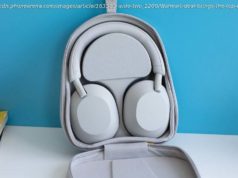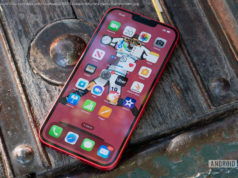Here’s the lowdown on noise-cancelling headphones, from how they work to the best models you can buy today.
Noise-cancelling headphones have exploded in popularity in recent years, thanks to advances in audio technology making it easier to silence the world around us. They’re super handy for a range of situations, allowing you to listen to your music or podcasts in relative peace, whether you’re in a busy office or on a noisy airplane. With so many brands producing their own versions of active noise-cancelling (ANC) headphones, it’s not hard to find one that will suit your taste, from over-ear cans to true wireless earbuds. But what exactly are you looking for in a pair of ANC headphones? With so many different models on the market, making the right choice to meet your personal needs can be a headache. Price is another consideration, since ANC headphones – generally costlier than their non-noise-cancelling counterparts – vary in price from budget-friendly to near extortionate. This means that it pays to be clued in on how the technology works and what kind of headphones or earbuds you should be considering. That’s why we’ve put together this guide on everything you need to know about noise-cancelling headphones, from the different methods manufacturers use to give you some peace and quiet, to the best noise-cancelling headphones you should buy. Noise-cancelling headphones are headphones that either completely or partially block the ambient sound in your environment. So, if you’re walking outside and there’s a gusty breeze, you won’t hear the sound of the wind rushing past your ears quite as intensely as you would with a normal pair of headphones. You might not even hear it at all, depending on what you’re listening to. These headphones are able to decrease the sound of various noisy things, like traffic, or people talking. Some can even dampen the low rumble in the cabin of an aircraft in flight. The amount of ambient noise these headphones can block depends on a number of factors, including the noise cancellation methods they use, their construction, and the loudness of your environment. There are two main methods of noise cancellation: passive and active. Most headphones – excluding bone conduction headphones, which don’t touch your ears at all – use the former, but headphones marketed as noise-cancelling use the latter. In passive noise cancellation – also known as passive noise reduction – a pair of headphones physically blocks environmental sound from reaching your ears. All headphones that sit on, in, or over your ears will do this to some degree. How successfully a pair of headphones passively block out noise depends on their design. A pair of over-ear headphones with generously padded ear cups will reduce the sound of your surroundings more effectively than a pair of open-back headphones that allow air to pass through the ear cups. Similarly, a pair of in-ear headphones with silicone or memory foam eartips that sit in your ear canal will block out more noise than in-ear headphones with a more open fit, like the Apple AirPods 3. Bone conduction headphones won’t give you any passive noise cancellation because they sit on your temples or cheekbones and transmit sound via vibrations, leaving your ears open to hear the world around you. While passive noise cancellation can be pretty effective, it’s active noise cancellation that you really want if you’re trying to listen to your music without any acoustic interruptions. Active noise-cancelling headphones utilize inbuilt microphones to digitally assess environmental noise and create ‚anti-noise‘ frequencies that are incorporated into your music playback. This cancels out the sound of your surroundings using analog or digital filters. If that sounds a little confusing, just imagine a sound wave. Noise-cancelling headphones essentially create a mirror image – known as an ‘antiphase’ – of the sound waves generated by the world around you. If there’s a peak in the sound wave, that antiphase will have a trough.
Start
United States
USA — IT How does active noise cancellation work? ANC headphones and earbuds explained






